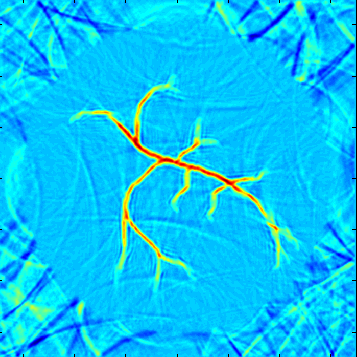
Inverse problems are intrisically difficult to solve: this fact is due in part to their very mathematical structure and to the effect that generally only partial data is available.
In the last decade, new and exciting directions of research have emerged. On the one hand, the crossing of ideas from neighboring topics such as control theory, shape optimization or geometry has allowed substantial progress in analysing and solving inverse problems. On the other hand, in an effort to increase the amount of information available for reconstruction, new imaging methodologies have been invented, that use multi-physics modalities and apriori knowledge of the possible multiscale character of a medium.
Our project focuses on three of these new directions, where our team is at the forefront of international research. The project is funded by Labex Persyval (2014-2016).